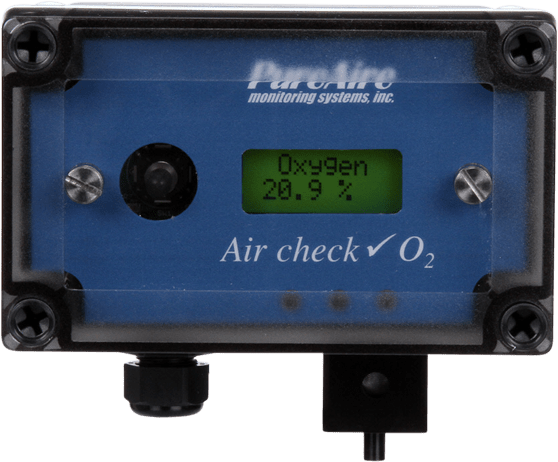How and Why Nitrogen is used in Semiconductor Manufacturing Plants
Nitrogen is used throughout the manufacturing process, from purging pumps to abatement. Nitrogen is also used in the process, especially now that fab size is growing. In a modern semiconductor manufacturing plant, as much as 50,000 cubic meters of nitrogen gas are used every hour.
To meet this demand, semiconductor manufacturing plants are installing nitrogen generators onsite. Generators mean a cheap, efficient, and always-ready supply of nitrogen gas to supply production.
As long as nitrogen gas is stored safely in the generator and used properly, there is no health risk. Yet if the generator or supply lines develop a leak, nitrogen gas can escape and deplete oxygen in the environment. Since nitrogen gas is both odorless and colorless, there is no way that staff can monitor their risk.
Along with nitrogen, argon gas is used in semiconductor manufacturing, most notable as a sputtering gas. Like nitrogen, argon gas depletes oxygen from the environment. Like nitrogen, the gas has no color or odor. In a closed area, the gas can deplete oxygen and cause respiratory problems and eventual suffocation.
How an Oxygen Analyzer Can Protect Staff Working in a Semiconductor Manufacturing Plant
If either nitrogen or argon were to leak into the plant, these inert gases would begin to deplete the levels of oxygen in the air. OSHA sets the oxygen threshold at 19.5 percent or less oxygen in the air. If oxygen levels fall below this, staff could suffer.
When oxygen levels fall to OSHA’s threshold, staff may show signs of confusion or fatigue. Since there are no warning signs that something is wrong, staff can fall unconscious before they can escape the oxygen deficient environment. Once unconscious, they asphyxiate.
It is critical for any workplace that uses these inert gases, including semiconductor plants, to monitor levels of oxygen in the air and alert workers if the ambient oxygen levels fall to the OSHA threshold.
By installing an oxygen monitor and an oxygen analyzer anywhere inert gases are used, manufacturers can protect the safety of their workers through continual oxygen monitoring and fast alert if oxygen levels fall. A wall-mounted oxygen monitor scans the atmosphere and measures the amount of oxygen from 0 to 25 percent, well above the safety threshold. As long as there is enough oxygen in the air — which there will be as long as there is no inert gas leak — the oxygen monitor will remain silent.
When oxygen levels fall to the OSHA threshold, the oxygen monitor will flash lights and sound an alarm, providing instant notification to workers. Staff can take notice and evacuate before negative health outcomes occur.
An oxygen analyzer measures the level of oxygen present in gas produced via nitrogen generator to ensure the purity of the gas for use in manufacturing. Oxygen analyzers are ideal for low level analysis and can measure from 0 to 1,000 ppm. Workers can check oxygen levels at a glance and ensure the nitrogen generator is working properly. When combined with the oxygen monitor for safety, the oxygen analyzer streamlines and safeguards the semiconductor manufacturing process.


